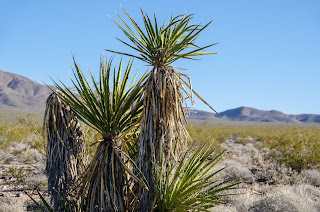Las Vegas Sprawl Plan Would Undermine Wildlands, Recreation

Local officials in Las Vegas have are looking to expand the metropolitan area's urban sprawl much deeper into desert wildlands, encroaching on two National Conservation Areas and bolstering plans for an ill-conceived major airport south of the city that would send air traffic over the Mojave National Preserve. The Nevada Independent reported that Clark County - home of Las Vegas - wants Congress to consider legislation that would hand over nearly 62 square miles of public lands to the County for future urban development. The effect of continued urban sprawl would span across much more than just the 62 square miles of land bulldozed for more roads, housing, strip malls and warehouses. For one, urban encroachment would reach the doorstep - or begin to surround - prized recreation areas. Hiking in Sloan Canyon or parts of Red Rock Canyon will be less desirable if the sights and sounds of human develop begin to intrude on areas that currently offer a natural escape from these el





